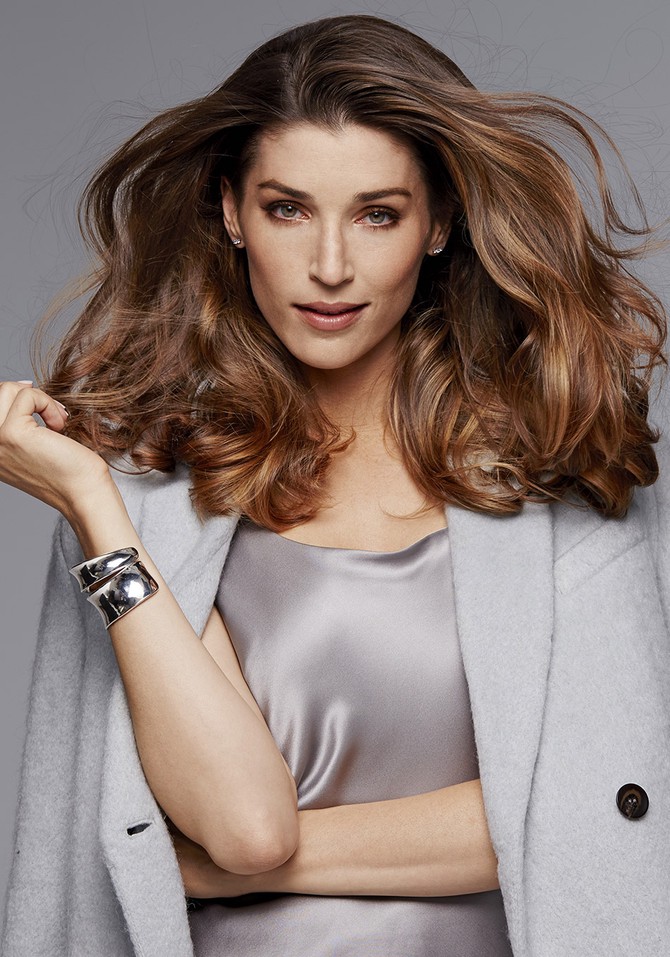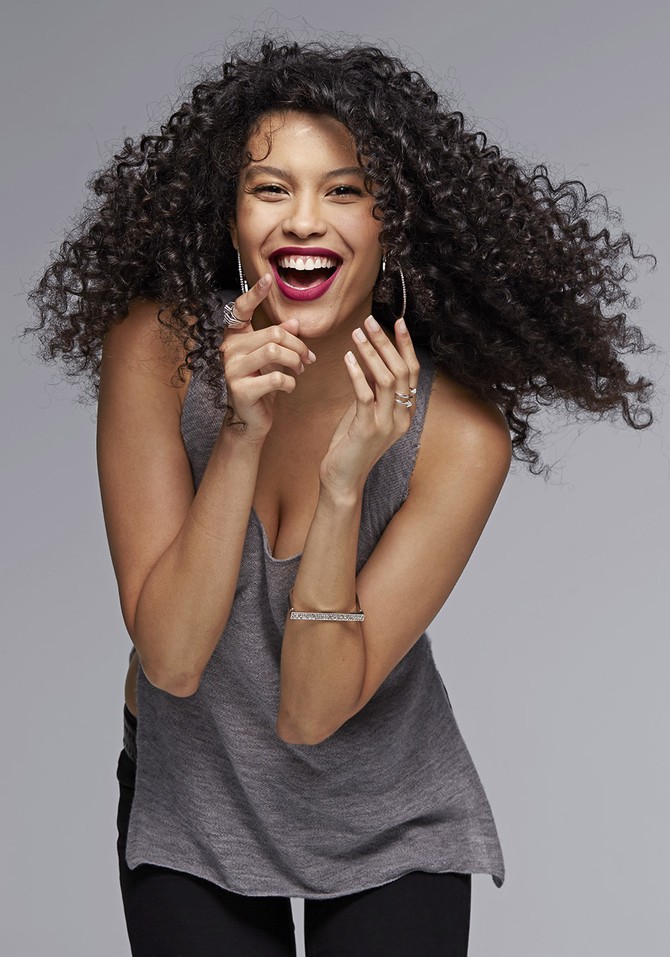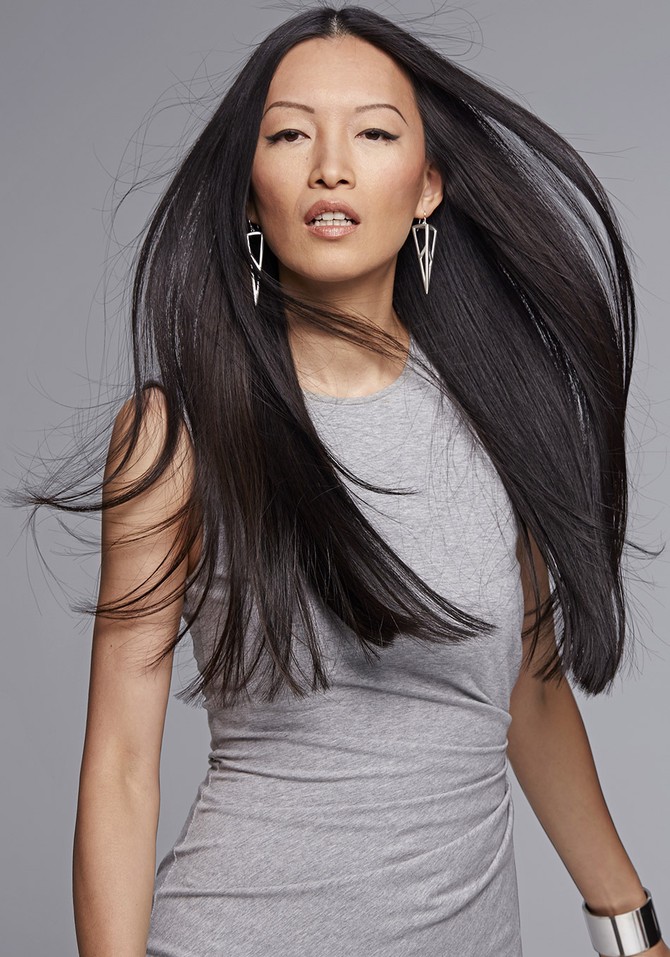The Best Haircuts for Frizzy, Curly, Fried and Fine Hair
Great hair starts with the right routine—but figuring out what works can really get you in a tangle. So we asked a panel of experts for step-by-step regimens to combat the most common hair problems.
By Melissa Goldberg

Photo: Joshua Pestka/Studio D.
Frantic with Frizz
Shampoo and Conditioner: The root cause of frizz is a lack of hydration, which makes hair brittle and unruly. Choose a shampoo and conditioner that contain moisturizing humectants (like hyaluronic acid or glycerin) and ingredients that help seal the hair's cuticle (outer layer) to prevent moisture from escaping, says cosmetic chemist Ni'kita Wilson. Look for wheat and vegetable proteins, dimethicone, or a conditioning polymer like polyquaternium-7.
Treatment: Once a week, apply a smoothing hair mask with rice proteins, vegetable proteins, or dimethicone. The concentrated dose of ingredients will reinforce the smooth seal on the hair shaft.
Styling: Avoid products containing high levels of alcohol (it will be near the top of the ingredients list), says Wilson. Alcohol can damage the cuticle's protective barrier.
The Best Cut: Be sure your stylist always uses scissors—never a razor, which can create a wispy effect on the ends and make your hair appear frizzier, says New York City salon owner Nunzio Saviano.
Treatment: Once a week, apply a smoothing hair mask with rice proteins, vegetable proteins, or dimethicone. The concentrated dose of ingredients will reinforce the smooth seal on the hair shaft.
Styling: Avoid products containing high levels of alcohol (it will be near the top of the ingredients list), says Wilson. Alcohol can damage the cuticle's protective barrier.
The Best Cut: Be sure your stylist always uses scissors—never a razor, which can create a wispy effect on the ends and make your hair appear frizzier, says New York City salon owner Nunzio Saviano.

Photo: Joshua Pestka/Studio D.
Out of Control Curly
Shampoo and Conditioner: The key to well-defined curls? Moisturizing. Avoid shampooing too frequently (more than every other day), which strips the hair of its natural oils, says Boston salon owner Mario Russo. When you do shampoo, be sure to also use a smoothing conditioner formulated with hydrating ingredients like glycerin, hyaluronic acid, seaweed extract, apricot oil, or coconut oil, says Wilson.
Treatment: If you have fine hair, spritz your strands with a leave-in conditioner containing amodimethicone and cetrimonium chloride immediately after showering to add shine and hydration, says Wilson. For thick or coarse hair, use a conditioning mask with natural oils and butters once or twice a week.
Styling: For defined yet touchable curls, apply a moisturizing and/or antifrizz cream with dimethicone from roots to ends, then run a wide-tooth comb through your hair to distribute the product evenly, says New York City stylist Juan Carlos Maciques. Follow with curl-enhancing spray (for fine hair) or gel or mousse (for thick hair), then run the comb from roots to ends again.
The Best Cut: Curls and waves need weight to look soft and loose, so the ideal style falls to your collarbone or below, says Maciques. To keep it from becoming too bottom-heavy, your stylist should add a few long layers.
Treatment: If you have fine hair, spritz your strands with a leave-in conditioner containing amodimethicone and cetrimonium chloride immediately after showering to add shine and hydration, says Wilson. For thick or coarse hair, use a conditioning mask with natural oils and butters once or twice a week.
Styling: For defined yet touchable curls, apply a moisturizing and/or antifrizz cream with dimethicone from roots to ends, then run a wide-tooth comb through your hair to distribute the product evenly, says New York City stylist Juan Carlos Maciques. Follow with curl-enhancing spray (for fine hair) or gel or mousse (for thick hair), then run the comb from roots to ends again.
The Best Cut: Curls and waves need weight to look soft and loose, so the ideal style falls to your collarbone or below, says Maciques. To keep it from becoming too bottom-heavy, your stylist should add a few long layers.

Photo: Joshua Pestka/Studio D.
Fundamentally Fried
Shampoo and Conditioner: Unlike your skin, hair can't repair itself. Once it's been damaged—through excessive heat styling, frequent dyeing, or overprocessing—the only solution is to cut off the damage. But if you want to temporarily strengthen hair, you can use a shampoo and conditioner with keratin (a nourishing protein), which will help reinforce weak strands, says Wilson.
Treatment: Once a week, use a reconstructive or repairing mask that contains proteins, amino acids, and natural oils.
Styling: To state the obvious, the best way to prevent further damage is to cut back on heat styling or chemical processing. When you do blow-dry, flatiron, or curl your hair, use the lowest temperature setting and prep with a heat protectant formulated with dimethicone, a silicone that acts as a buffer between the heat and your hair, says Wilson. To temporarily smooth frayed ends, apply a split-end treatment, says Russo.
The Best Cut: You can avoid having to cut off two to three inches of damage in one sitting by getting a trim every eight weeks, which will keep your ends looking even and clean. Choose a blunt cut with a little layering that requires minimal styling.
Treatment: Once a week, use a reconstructive or repairing mask that contains proteins, amino acids, and natural oils.
Styling: To state the obvious, the best way to prevent further damage is to cut back on heat styling or chemical processing. When you do blow-dry, flatiron, or curl your hair, use the lowest temperature setting and prep with a heat protectant formulated with dimethicone, a silicone that acts as a buffer between the heat and your hair, says Wilson. To temporarily smooth frayed ends, apply a split-end treatment, says Russo.
The Best Cut: You can avoid having to cut off two to three inches of damage in one sitting by getting a trim every eight weeks, which will keep your ends looking even and clean. Choose a blunt cut with a little layering that requires minimal styling.

Photo: Joshua Pestka/Studio D.
Flimsy, Fine and Flat
Shampoo and Conditioner: To avoid weighing down hair, choose a shampoo without butters, oils, or silicones. You can also use a conditioner with PVP (a thickening polymer) or hydrolyzed wheat or vegetable proteins, which bind to the hair strand, making it look fuller, says Wilson.
Treatment: A healthy scalp nourishes the hair follicles so they'll produce thicker and stronger strands. Twice a week, apply a scalp mask or serum that contains natural oils (like almond and coconut) and fruit extracts.
Styling: The best body builder is a volumizing mousse. Unlike a spray (which adds lift just at the roots), a mousse (look for PVP, hydrolyzed quinoa, and proteins on the ingredients list) also plumps the cuticle to create a thicker, more voluminous look all over, says Maciques. Apply it from roots to ends, then comb through.
The Best Cut: A slightly layered bob that falls between your jaw and collarbone will give you movement and fullness, says Maciques. Avoid shoulder-length or longer styles with lots of layers, which can make hair look thin or stringy.
The Deadly Sins of Styling
Using excessive heat.
If you can't live without your straightener, curling iron, or blow-dryer, be sure you never let it sit on your hair in one spot for more than a few seconds, says Kari Hill, L'Oréal Paris consulting haircolorist.
Overshampooing.
Washing too often dries out the hair and scalp. It's best to use a shampoo and conditioner suitable for your hair type, says Hill.
Wearing tight braids and ponytails.
A pulled-back style looks sleek, but can contribute to hair loss.
Treatment: A healthy scalp nourishes the hair follicles so they'll produce thicker and stronger strands. Twice a week, apply a scalp mask or serum that contains natural oils (like almond and coconut) and fruit extracts.
Styling: The best body builder is a volumizing mousse. Unlike a spray (which adds lift just at the roots), a mousse (look for PVP, hydrolyzed quinoa, and proteins on the ingredients list) also plumps the cuticle to create a thicker, more voluminous look all over, says Maciques. Apply it from roots to ends, then comb through.
The Best Cut: A slightly layered bob that falls between your jaw and collarbone will give you movement and fullness, says Maciques. Avoid shoulder-length or longer styles with lots of layers, which can make hair look thin or stringy.
The Deadly Sins of Styling
Using excessive heat.
If you can't live without your straightener, curling iron, or blow-dryer, be sure you never let it sit on your hair in one spot for more than a few seconds, says Kari Hill, L'Oréal Paris consulting haircolorist.
Overshampooing.
Washing too often dries out the hair and scalp. It's best to use a shampoo and conditioner suitable for your hair type, says Hill.
Wearing tight braids and ponytails.
A pulled-back style looks sleek, but can contribute to hair loss.
From the September 2016 issue of O, The Oprah Magazine

